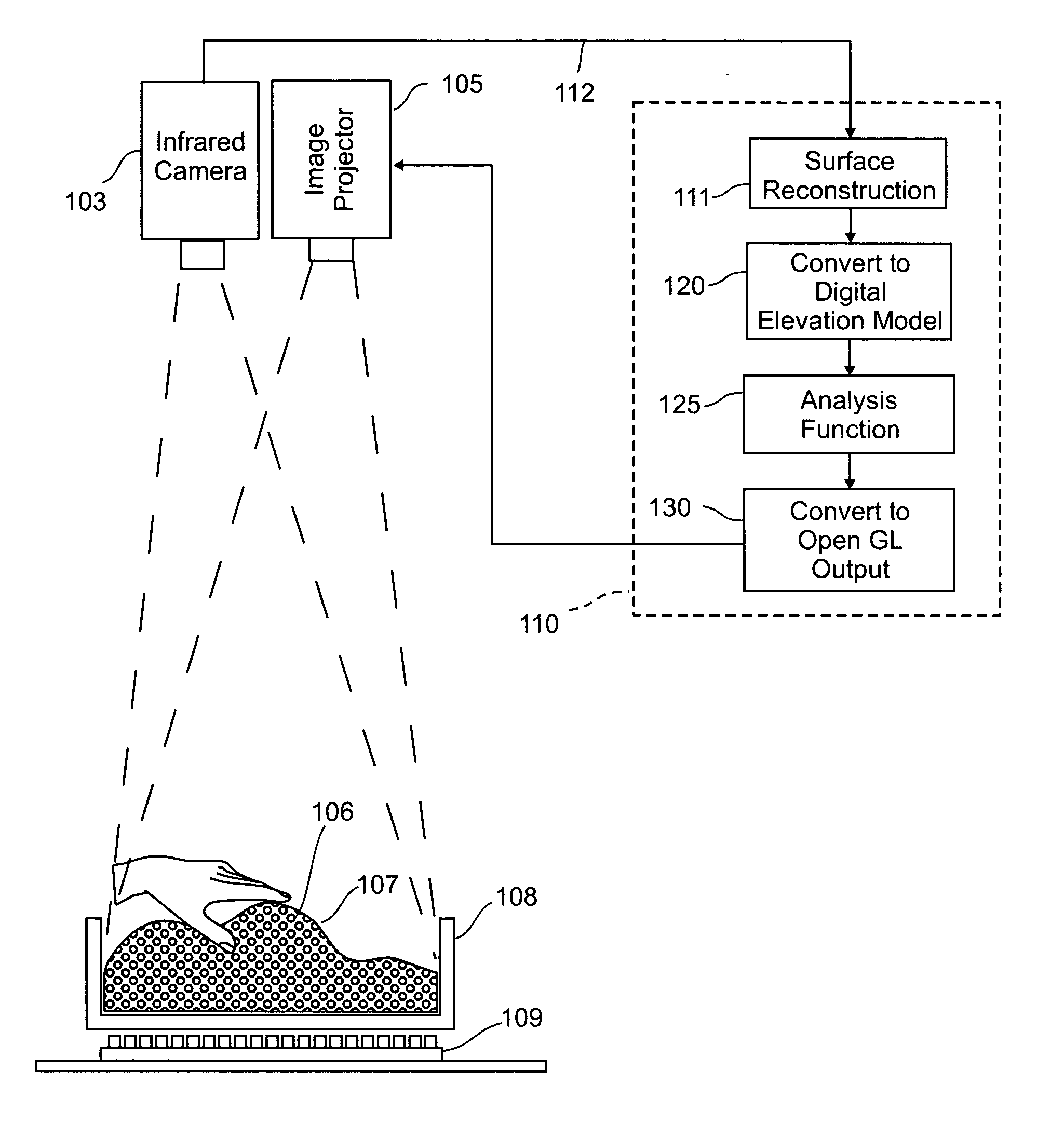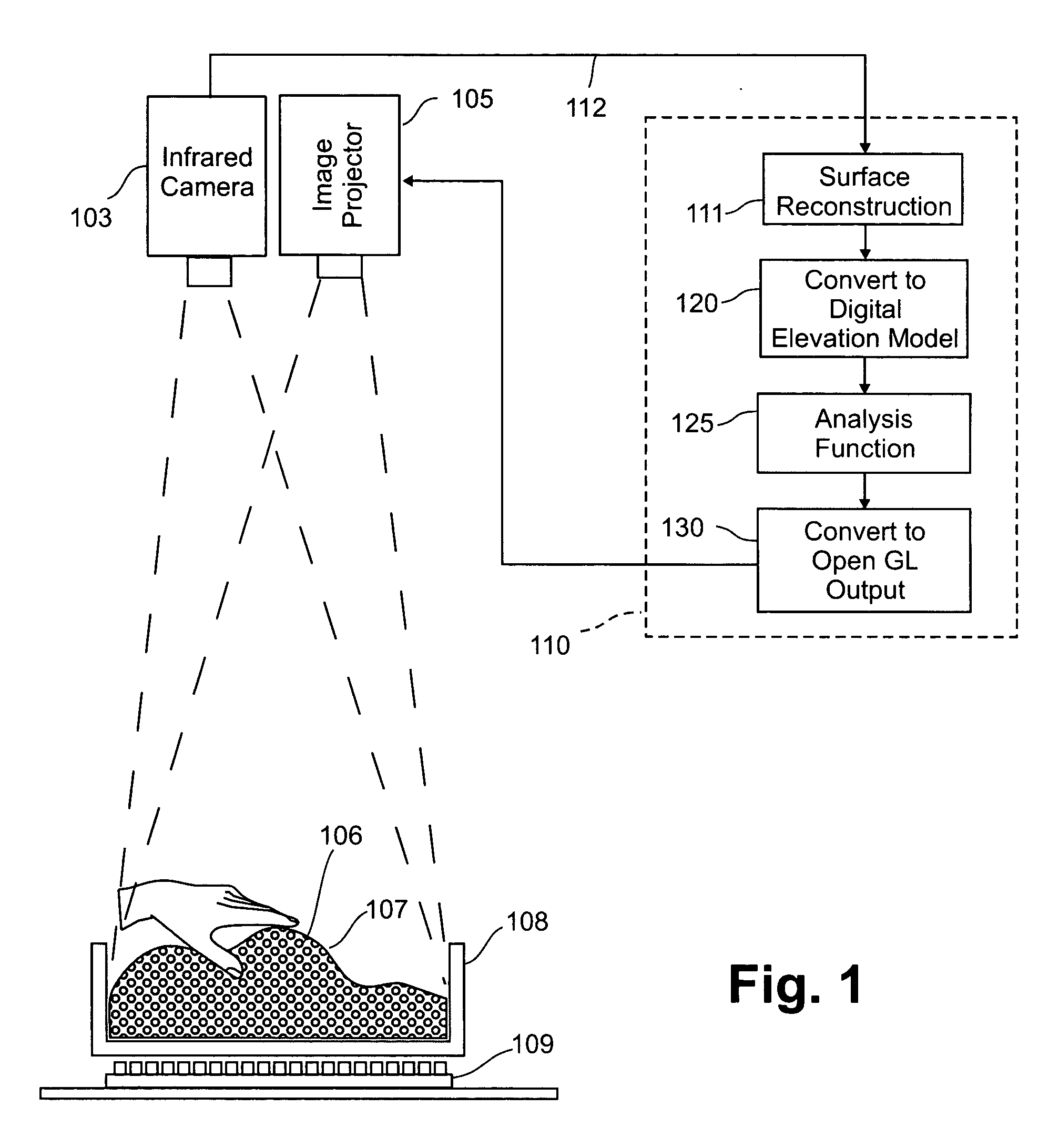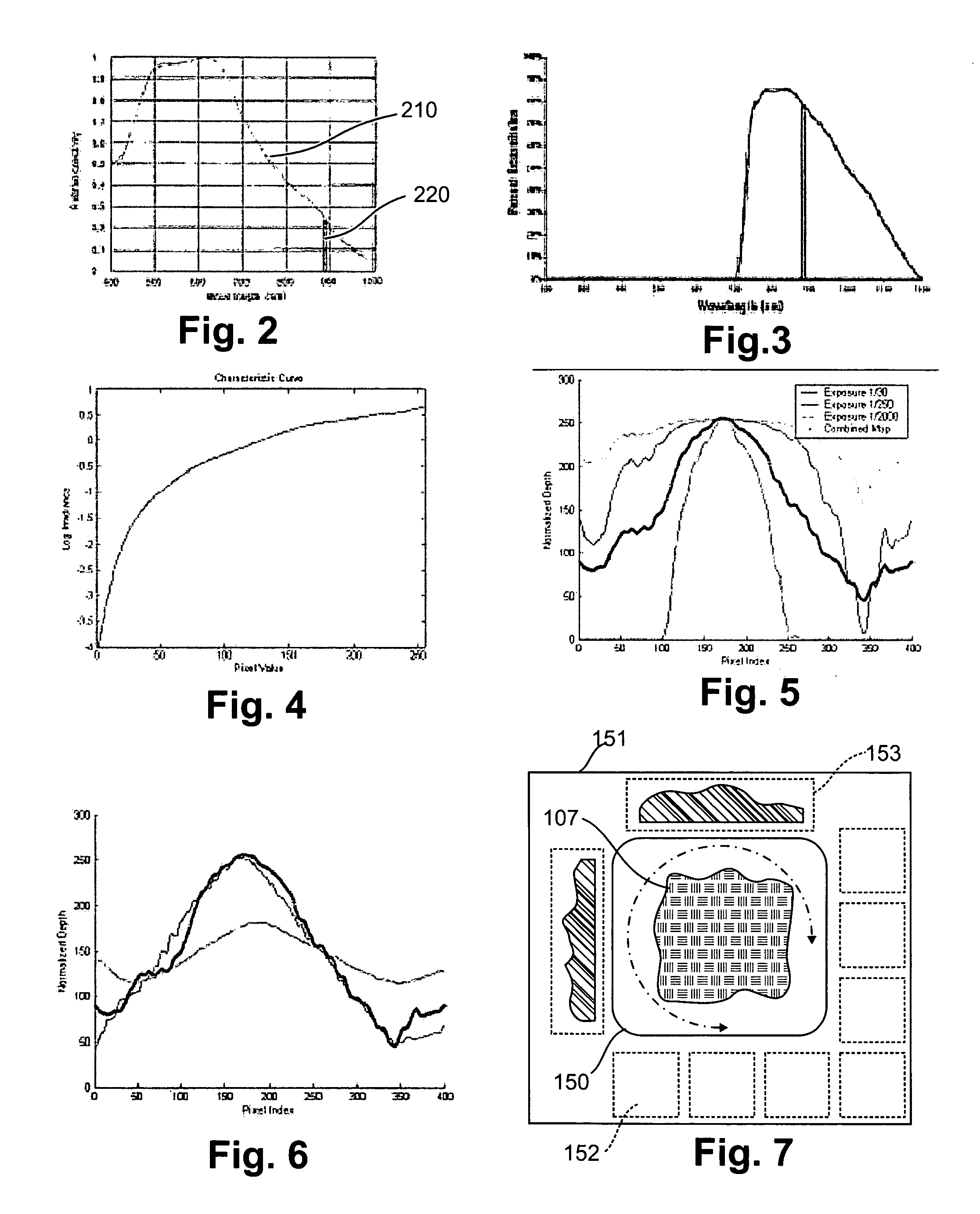Three dimensional tangible interface for interacting with spatial-temporal data using infrared light sources and infrared detectors
- Summary
- Abstract
- Description
- Claims
- Application Information
AI Technical Summary
Benefits of technology
Problems solved by technology
Method used
Image
Examples
Embodiment Construction
The preferred embodiment of the invention performs real-time computational analysis of landscape models. It is to be understood, however, that the techniques employed are more broadly applicable to a variety of uses which benefit from the availability of a human-computer interface that enables the user to define geometric forms by manipulating a deformable surface to change its shape, and to directly visualize computed result data that is projected in real time onto the surface of the deformable surface. In addition to landscape design, the interface can be used to advantage in medical imaging, free-form architectural construction, fluid dynamics modeling, and many other domains that require an understanding of special and temporal factors manifested in three dimensional space.
When applied to the problem of landscape design, the specific embodiment described below, which is called “Sandscape,” allows a landscape designer to modify the topography of a translucent glass beads lands...
PUM
 Login to View More
Login to View More Abstract
Description
Claims
Application Information
 Login to View More
Login to View More - R&D
- Intellectual Property
- Life Sciences
- Materials
- Tech Scout
- Unparalleled Data Quality
- Higher Quality Content
- 60% Fewer Hallucinations
Browse by: Latest US Patents, China's latest patents, Technical Efficacy Thesaurus, Application Domain, Technology Topic, Popular Technical Reports.
© 2025 PatSnap. All rights reserved.Legal|Privacy policy|Modern Slavery Act Transparency Statement|Sitemap|About US| Contact US: help@patsnap.com



